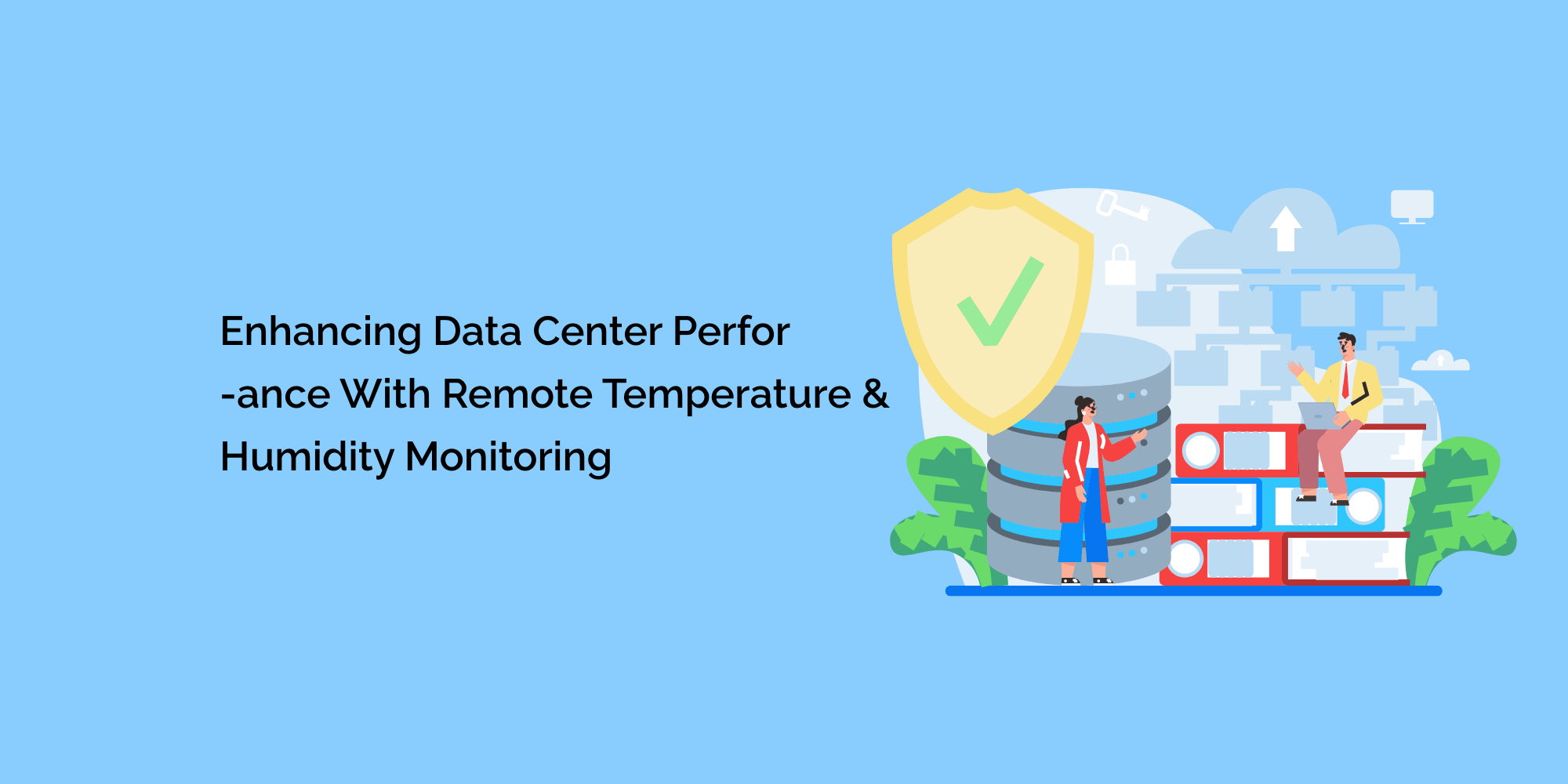Data centers are the backbone of modern businesses, hosting critical IT infrastructure and housing valuable data. Maintaining proper temperature and humidity levels is essential to ensure optimal performance and prevent costly downtime. Remote temperature and humidity monitoring has emerged as a powerful solution to enhance data center performance by providing real-time insights, proactive alerts, and remote management capabilities. This blog will explore the benefits of remote temperature and humidity monitoring in data centers and how it contributes to improved efficiency, reliability, and cost-effectiveness.
The Importance of Temperature and Humidity in Data Centers
Maintaining the right temperature and humidity in data centers is crucial for several reasons. Fluctuations in temperature and humidity can lead to equipment failures, reduced lifespan of components, increased energy consumption, and potential data loss. We will discuss the optimal temperature and humidity ranges for data centers and highlight the risks associated with deviations from these levels.
The Role of Remote Monitoring in Data Center Performance
Remote temperature and humidity monitoring systems give data center operators real-time visibility into environmental conditions, allowing them to manage their facilities proactively. We will explore how these systems use wireless sensors and cloud-based platforms to collect and analyze data, providing operators with actionable insights to optimize their infrastructure.
Benefits of Remote Temperature and Humidity Monitoring
- Real-time Monitoring: Remote monitoring systems offer real-time access to temperature and humidity data, enabling quick detection and response to deviations. Operators can view live data, set alert thresholds, and receive immediate notifications via email or SMS.
- Proactive Maintenance: By monitoring environmental conditions remotely, data center operators can identify potential issues before they escalate. This enables proactive maintenance, reducing the risk of equipment failure and costly downtime.
- Energy Efficiency: Remote monitoring allows operators to optimize cooling systems based on real-time data, minimizing energy consumption and reducing operational costs.
- Data Integrity: Maintaining proper temperature and humidity levels ensures the integrity and reliability of stored data, minimizing the risk of data corruption or loss. e. Remote Management: Operators can remotely manage temperature and humidity settings, adjust thresholds, and make informed decisions without being physically present at the data center.
Implementing Remote Temperature and Humidity Monitoring
We will discuss the critical steps to implementing a remote monitoring system in a data center. This includes selecting suitable sensors, deploying them strategically, choosing a reliable cloud-based platform, and integrating the system with existing infrastructure. We will also explore the importance of proper calibration and regular maintenance for accurate and reliable monitoring.
Best Practices for Remote Temperature and Humidity Monitoring
We will provide a set of best practices to optimize remote monitoring systems in data centers. This includes setting appropriate alert thresholds, establishing regular data analysis and reporting routines, conducting trend analysis for long-term insights, and ensuring proper documentation of monitoring activities. Additionally, we will emphasize the importance of training data center staff on using the remote monitoring system effectively.
Case Studies and Success Stories
We will showcase real-world examples of how organizations have enhanced their data center performance through remote temperature and humidity monitoring. These case studies will highlight the challenges faced, the solutions implemented, and the benefits of increased efficiency, reduced downtime, and improved cost savings.
Future Trends in Remote Temperature and Humidity Monitoring
We will explore emerging trends and advancements in remote temperature and humidity monitoring for data centers. This includes the integration of artificial intelligence and machine learning algorithms for predictive analytics, using edge computing for real-time processing, and the potential for automation and autonomous control of environmental conditions.
Certainly! Here are some frequently asked questions (FAQs) about remote temperature and humidity monitoring in data centers:
What is remote temperature and humidity monitoring for data centers?
Remote temperature and humidity monitoring for data centers is a system that uses sensors and a centralized platform to monitor and manage the environmental conditions of a data center from a remote location. It allows data center operators to monitor temperature and humidity levels in real time and receive alerts in case of deviations.
Why is remote monitoring necessary for data centers?
Remote monitoring is essential for data centers as it enables proactive management of environmental conditions. Temperature and humidity fluctuations can impact equipment performance and reliability. Remote monitoring allows operators to detect and address issues promptly, preventing equipment failures, minimizing downtime, and preserving data integrity.
How does remote temperature and humidity monitoring work?
Remote monitoring systems consist of sensors placed strategically throughout the data center to collect temperature and humidity data. The data is transmitted wirelessly or through an internet connection to a centralized platform. Operators can access this platform remotely to monitor environmental conditions and receive alerts if thresholds are exceeded.
Conclusion
Remote temperature and humidity monitoring are vital in enhancing data center performance. By providing real-time insights, proactive alerts, and remote management capabilities, these systems empower data center operators to optimize environmental conditions, minimize downtime, reduce energy consumption, and ensure the integrity of critical IT infrastructure. Implementing a remote monitoring system requires careful planning, proper deployment of sensors, and integration with existing infrastructure. By following best practices and staying abreast of emerging trends, data center operators can harness the full potential of remote temperature and humidity monitoring to drive efficiency and reliability in their operations.








